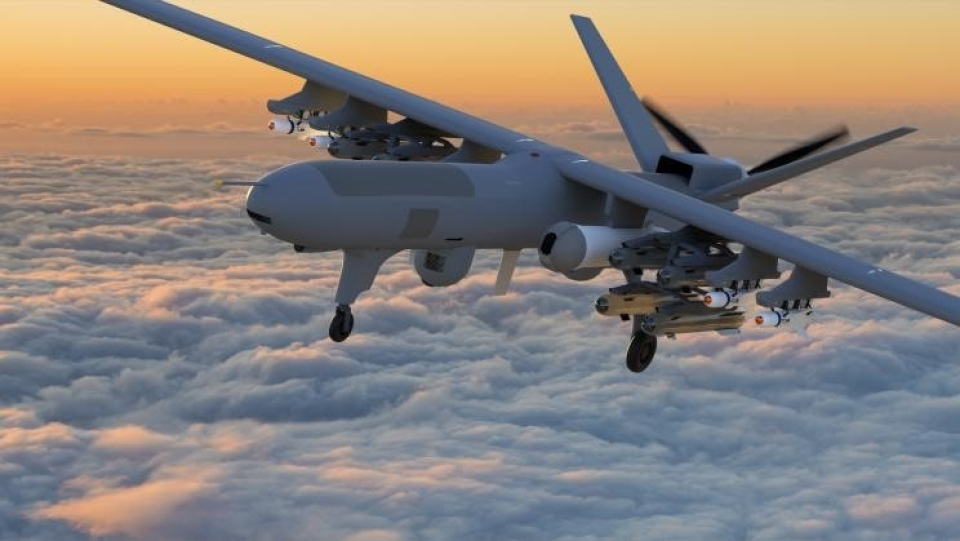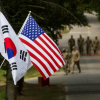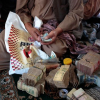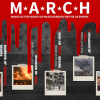by : sipri , STOCKHOLM INTERNATIONAL PEACE RESEARCH INSTITUTE
(Stockholm, 6 December 2021) Sales of arms and military services by the industry’s 100 largest companies totalled $531 billion in 2020—an increase of 1.3 per cent in real terms compared with the previous year. This is according to new data released today by the Stockholm International Peace Research Institute (SIPRI).
The arms sales of the Top 100 arms companies in 2020 were 17 per cent higher than in 2015—the first year for which SIPRI included data on Chinese firms. This marked the sixth consecutive year of growth in arms sales by the Top 100.
Arms industry weathers Covid-19 pandemic and economic downturn
Arms sales increased even as the global economy contracted by 3.1 per cent during the first year of the pandemic. ‘The industry giants were largely shielded by sustained government demand for military goods and services,’ said Alexandra Marksteiner, Researcher with the SIPRI Military Expenditure and Arms Production Programme. ‘In much of the world, military spending grew and some governments even accelerated payments to the arms industry in order to mitigate the impact of the Covid-19 crisis.’
Nevertheless, operating in the military market did not guarantee immunity to the effects of the pandemic. French arms manufacturer Thales, for example, ascribed a drop in arms sales of 5.8 per cent to lockdown-induced disruptions in the spring of 2020. Some companies also reported supply chain disruptions and delayed deliveries.
US companies continue to dominate ranking
The United States once again hosted the highest number of companies ranked in the Top 100. Together, the arms sales of the 41 US companies amounted to $285 billion—an increase of 1.9 per cent compared with 2019—and accounted for 54 per cent of the Top 100’s total arms sales. Since 2018, the top five companies in the ranking have all been based in the USA.
The US arms industry is undergoing a wave of mergers and acquisitions. To broaden their product portfolios and thus gain a competitive edge when bidding for contracts, many large US arms companies are opting to merge or acquire promising ventures. ‘This trend is particularly pronounced in the space sector,’ said Marksteiner. ‘Northrop Grumman and KBR are among several companies to have acquired high-value firms specialized in space technology in recent years.’
Chinese firms account for second largest share of Top 100 arms sales
The combined arms sales of the five Chinese companies included in the Top 100 amounted to an estimated $66.8 billion in 2020, 1.5 per cent more than in 2019. Chinese firms accounted for 13 per cent of total Top 100 arms sales in 2020, behind US companies and ahead of companies from the United Kingdom, which made up the third largest share.
‘In recent years, Chinese arms companies have benefited from the country’s military modernization programmes and focus on military–civil fusion,’ said Dr Nan Tian, SIPRI Senior Researcher. ‘They have become some of the most advanced military technology producers in the world.’ NORINCO, for example, co-developed the BeiDou military–civil navigation satellite system and deepened its involvement in emerging technologies.
Mixed results among European arms companies
The 26 European arms companies in the Top 100 jointly accounted for 21 per cent of total arms sales, or $109 billion. The seven British companies recorded arms sales of $37.5 billion in 2020, up by 6.2 per cent compared with 2019. Arms sales by BAE Systems—the only European firm in the top 10—increased by 6.6 per cent to $24.0 billion.
‘Aggregated arms sales by the six French companies in the Top 100 fell by 7.7 per cent,’ said Dr Lucie Béraud-Sudreau, Director of the SIPRI Military Expenditure and Arms Production Programme. ‘This significant drop was largely due to a sharp year-on-year decline in the number of deliveries of Rafale combat aircraft by Dassault. Safran’s arms sales grew, however, driven by increased sales of sighting and navigation systems.’
Arms sales by the four German firms listed in the Top 100 reached $8.9 billion in 2020—an increase of 1.3 per cent compared with 2019. Together, these firms accounted for 1.7 per cent of the Top 100’s total arms sales. Rheinmetall—the largest German arms manufacturer—recorded an increase in arms sales of 5.2 per cent. Shipbuilder ThyssenKrupp, in contrast, reported a drop of 3.7 per cent.
Russian arms sales decline for third year in a row
The combined arms sales of the nine Russian companies ranked in the Top 100 decreased from $28.2 billion in 2019 to $26.4 billion in 2020—a 6.5 per cent decline. This marks a continuation of the downward trend observed since 2017, when arms sales by Russian companies in the Top 100 peaked. Russian firms accounted for 5.0 per cent of total Top 100 arms sales.
Some of the sharpest declines in arms sales among the Top 100 were recorded by Russian firms. This coincided with the end of the State Armament Programme 2011–20 and pandemic-related delays in delivery schedules. Almaz-Antey and United Shipbuilding Corporation saw their arms sales fall by 31 per cent and 11 per cent, respectively. Conversely, United Aircraft Corporation increased its arms sales by 16 per cent.
Another key development in the Russian arms industry was the diversification of product lines. Russian companies are currently implementing a government policy to increase their share of civilian sales to 30 per cent of their total sales by 2025 and 50 per cent by 2030.
Other notable developments in the Top 100
• Collectively, the arms sales of companies in the Top 100 based outside the USA, China, Russia and Europe totalled $43.1 billion in 2020—an increase of 3.4 per cent since 2019. This represents 8.1 per cent of the Top 100’s total arms sales.
• The arms sales of the three Israeli companies listed in the Top 100 reached $10.4 billion, or 2.0 per cent of the total.
• The aggregated arms sales of the five Japanese companies in the ranking were $9.9 billion in 2020, or 1.9 per cent of the total.
• Four South Korean companies were included in the ranking. Their combined arms sales amounted to $6.5 billion in 2020, a year-on-year increase of 4.6 per cent.
• Combined arms sales by the three Indian companies in the Top 100 grew by 1.7 per cent. In 2020 the Indian Government announced a phased ban on imports of certain types of military equipment to bolster self-reliance in arms production.
The SIPRI Arms Industry Database was created in 1989. The current version contains data from 2002. For the purposes of this press release, Russian companies are discussed separately from European companies. Five Chinese companies are included in the database from 2015 onwards. Other Chinese companies may have arms sales high enough to rank among the Top 100, but there is insufficient data to include them in the ranking.
‘Arms sales’ are defined as sales of military goods and services to military customers domestically and abroad. Unless otherwise specified, all changes are expressed in real terms and all figures are given in constant (2020) US dollars. Comparisons between 2019 and 2020 are based on the list of companies ranked in 2020 (i.e. the annual comparison is between the same set of companies). Longer-term comparisons are based on the sets of companies listed in the respective year (i.e. the comparison is between a different set of companies). The SIPRI Arms Industry Database, which presents a more detailed data set for the years 2002–20, is available on SIPRI’s website.
This is the first of three major data launches in the lead-up to the publication of SIPRI’s flagship publication in mid 2022, the annual SIPRI Yearbook. Ahead of this, SIPRI will release its international arms transfers data (details of all international transfers of major arms in 2021) as well as its world military expenditure data (comprehensive information on global, regional and national trends in military spending in 2021).

The arms sales of companies in the Top 100 based outside the USA, China, Russia, Israel, Japanese, South Korean, India and Europe totalled $70 billion in 2020—an increase of 15 per cent since 2019.

















